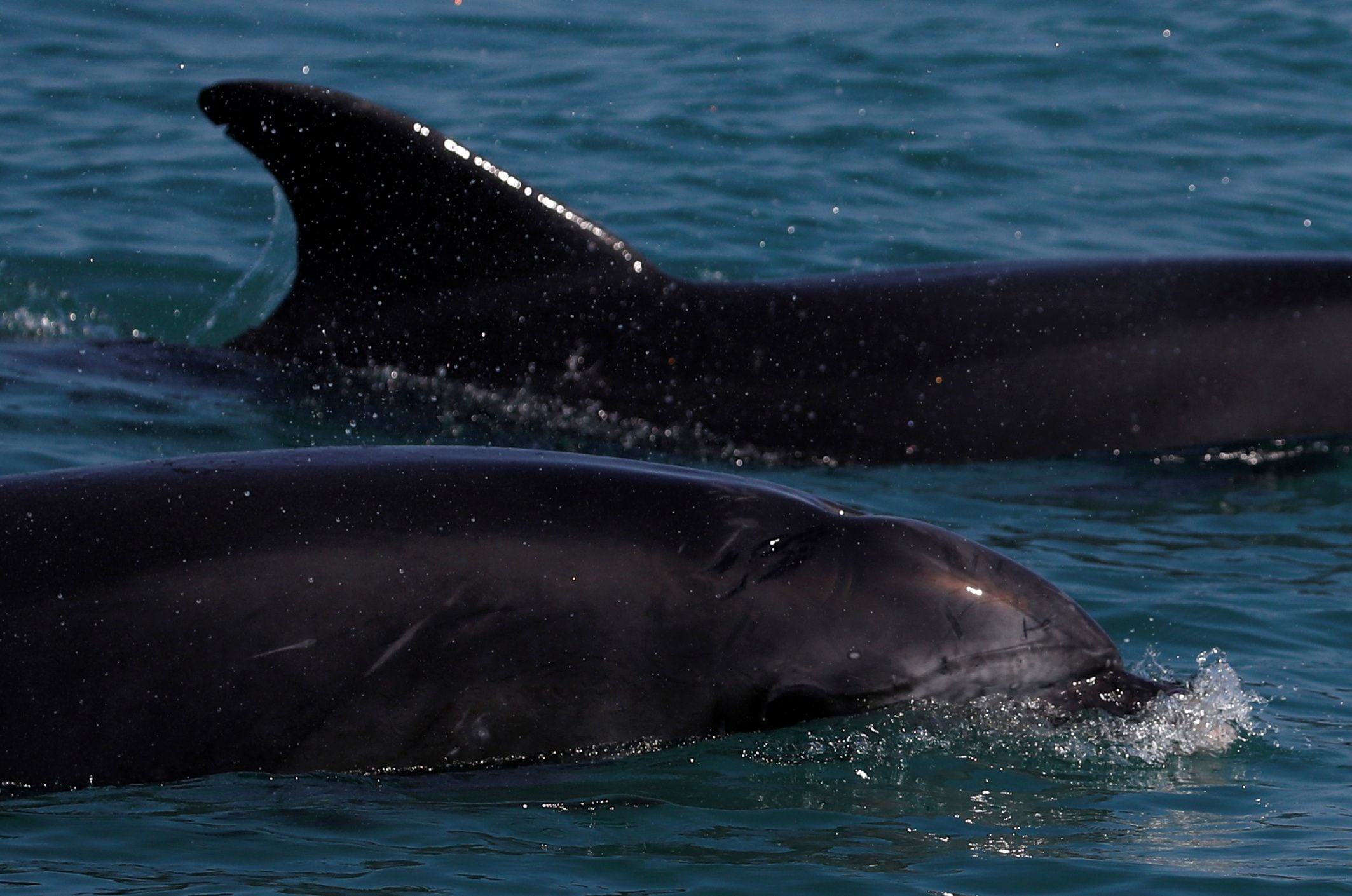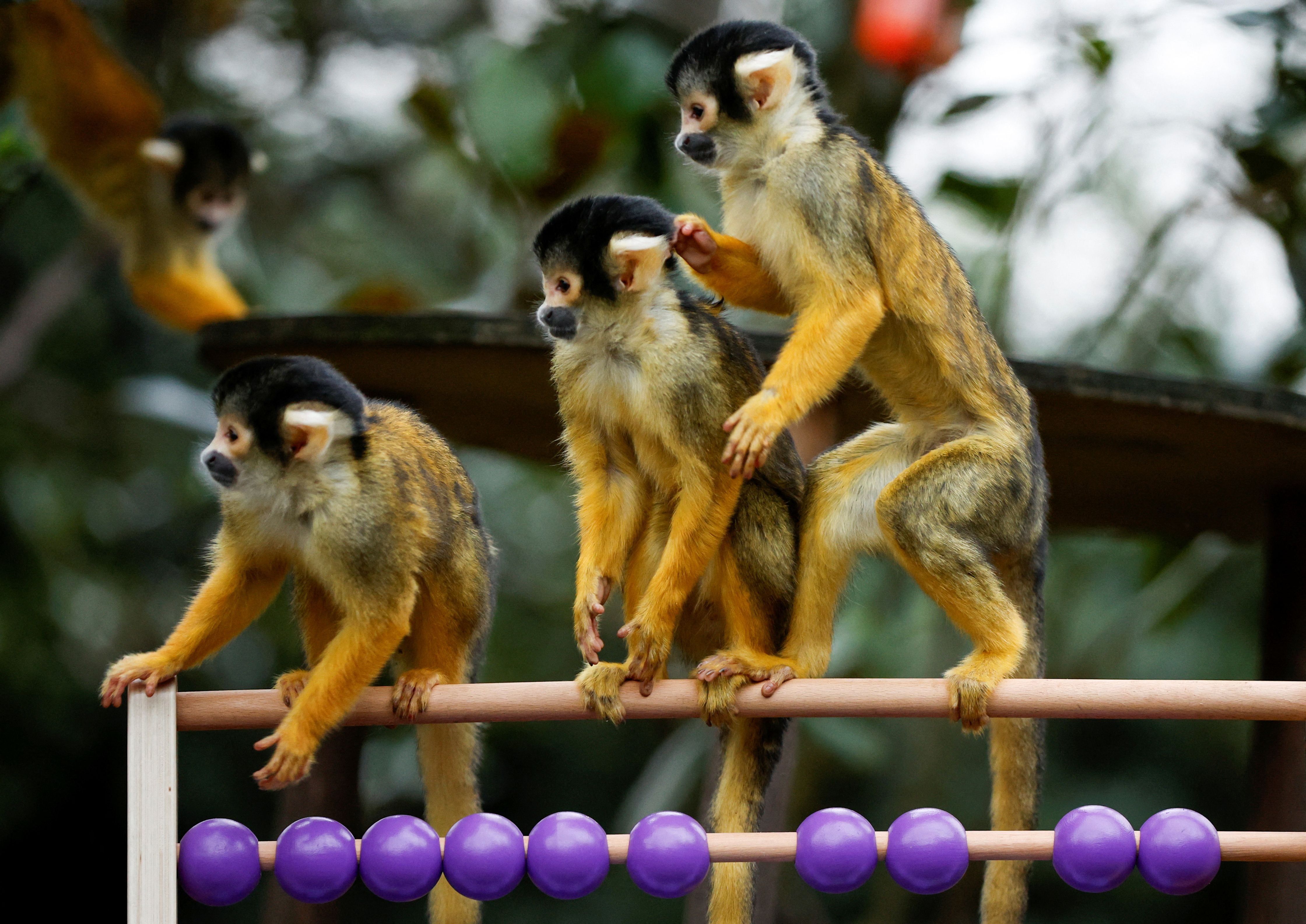
Dolphins whistle at each other as part of a male bonding ritual and rely on “wingmates” to compete for the affections of potential mates, she found new research. Experts from the University of Bristol said that bottlenose dolphins can become more popular simply through vocal exchanges, helping them maintain weaker but vital social relationships.
Not only this, but a separate study using the same data found that the more popular a dolphin is with other males, the more successful it is when it comes to producing offspring. This research led by the University of Zurich revealed that groups of male bottlenose dolphins work together to compete with rival groups for access to females, and the most popular males in the group have the best mating success.
Meanwhile, the Bristol study found that male dolphins are able to remain popular through sharp vocal exchanges with other males as an economical way to maintain their alliances, rather than other physical bonding activities. Experts say this is an important interaction to maintain when groups get bigger and competition for resources increases.
Lead author Emma Chereskin, a student at the University of Bristol, said: “Many animals, including humans, use tactile contact to strengthen and reaffirm important relationships. But as the number of close social relationships increases, so do the demands for time and space available for maintaining the relationship through physical contact. Male bottlenose dolphins form multi-level strategic alliances, and we wanted to know how they maintained multi-alliance relationships in large groups.”

Although male dolphins are known to use physical contact, such as gentle caresses, to connect with strongly linked allies, research from the University of Bristo shows that they rely on less time-demanding vocal exchanges to stay connected with weaker allies.
Scientists used nine years of acoustic and behavioral data from a population of dolphins in Shark Bay, Western Australia, which helped them assess how male dolphins bonded together. Bottlenose dolphins team up to hunt or protect themselves from predators. Adult males live mainly alone or in groups of two or three and join the herds for short periods of time. They usually number about 10 to 30 members, although “superpods” of more than 1,000 have been registered.
The study's lead author, Dr. Stephanie King, also from Bristol, said: “We found within the central alliances of dolphins, strongly linked allies who engaged in more affiliative contact behavior, such as petting and rubbing, while weakly linked allies participated in more exchanges of whistles. This illustrates that these weaker but still key social relations can be maintained through vocal exchanges.”
It supports British anthropologist Robin Dunbar's theory that vocalizations and language evolved to replace grooming. Increasingly numerous groups demanded impossible time for physical contact. Chereskin stated: “Our findings provide new evidence that vocal exchanges can play a binding role. But, more importantly, and in line with the hypothesis of social bonding, vocal exchanges can function as a substitute for physical bonding, allowing male dolphins to 'link distance'. These tests in support of the hypothesis of social ties outside the primate lineage raise new and exciting questions about the origins and evolution of language in the different taxa.”

Male dolphins in Shark Bay (Western Australia) live in complex social groups where they form lasting bonds to cooperate with other males. To do this, they come together in large stable alliances. Within these alliances, males form smaller and less stable groups of two to three to mate with females, steal them from other alliances or defend against attacks, according to researchers led by the University of Zurich.
“This type of male reproductive cooperation is very unusual in the animal kingdom,” said Livia Gerber, a former doctoral student in the Department of Anthropology at the University of Zurich. “It has only been observed in a much less complex form in some other primates.”
Together with an international team led by UZH professor Michael Krützen, I wanted to find out whether the complex social life of dolphins affected the reproductive success of males or whether, as in most other species, stronger or more experienced males are more likely to breed offspring.
Researchers analyzed 30 years of behavioral data from 85 male dolphins and used genetic data to perform paternity analysis for more than 400 dolphins. The study showed that well-integrated “popular” males with strong social ties with many alliance partners produce the most offspring. Gerber said: “Well-integrated males might be in a better position to reap the benefits of cooperation and access crucial resources such as food or mates. They may also be more resistant to partner loss compared to those with few, but closer partners.”
Bottlenose dolphins inhabit warm and temperate seas around the world and are found everywhere except around the Arctic and Antarctica. They are recognized for their intelligence, they use sea sponges as tools to reach food that would normally be inaccessible and communicate through pulsed sounds, clicks and body language.
KEEP READING:
Últimas Noticias
Debanhi Escobar: they secured the motel where she was found lifeless in a cistern

The oldest person in the world died at the age of 119

Macabre find in CDMX: they left a body bagged and tied in a taxi
The eagles of America will face Manchester City in a duel of legends. Here are the details

Why is it good to bring dogs out to know the world when they are puppies




